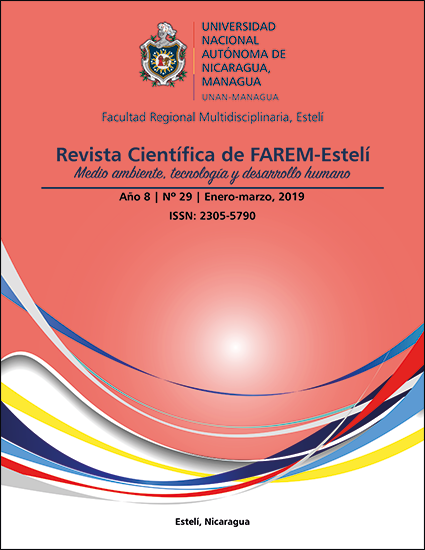Management of the Almond Tree (Dipteryx oleifera Benth) in the Rama Kriol indigenous territory: Tiktik Kaanu
DOI:
https://doi.org/10.5377/farem.v0i29.7625Keywords:
Dipteryx oleifera, sowing, growth, germination, mortalityAbstract
Dipteryx oleifera Benth, is an endangered species, it is great economic importance in the humid tropics of the Autonomous Region of the South Caribbean Coast (RACCS), mainly for the indigenous populations of the Rama ethnic group. In order to contribute to the knowledge of the forest management of the species, an experiment was carried out in the Agroforestry Transfer Center (CeTAF) located in coordinates (N 11º 53 ‘50,4 “and W 083º 55’ 53,9”). A vivarium was built and 12,000 seeds were sown in 2-pound bags. The monitoring was carried out during 5 months, with a germination of 72.4% and a mortality of 27.6% in the nursery. Subsequently, 12 plots were established (1 plot of pure plantations, 2 plots of agroforestry systems and 9 plots of forest improvement), each plot of 10,000 m2 (1 hectare), planting density of 625 seedlings in 4x4 meter systems. The average growth of the seedlings in the plant nursery over 5 months (March-August 2006) was 8.61cm (range 5.35 - 11.22 cm). In order to monitor the systems, 5 subplots were established (A = Pure plantations, B and C = Agroforestry systems, C and D = Forest improvement) that were evaluated during 5 months (January-April and August 2007). The average monthly growth of the subplots was 5.45 cm (range 4 - 23 cm). On average, the subplots had a mortality rate of 13.33%, the lowest was 10% (A = Pure plantations) and the highest was 31.6% (D = Forest improvement). The highest growth reported by sprout was 208 cm and the lowest one was 20 cm.



